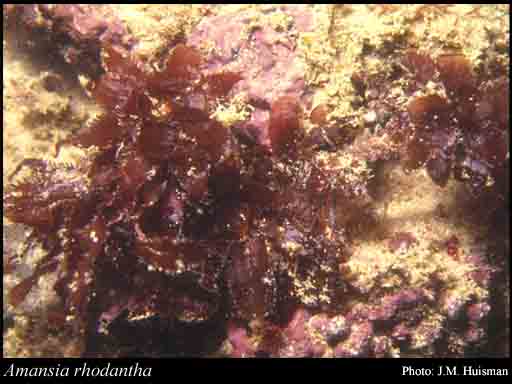- Reference
- Linnaea 15:26 (1841)
- Conservation Code
- Not threatened
- Naturalised Status
- Native to Western Australia
- Name Status
- Current

Scientific Description
Habit and structure. Thallus to 5 cm tall, rose-red, with a discoid holdfast and terete primary axes, these bearing loriform rosettes of leafy secondary branches to 15 mm long, 3–4 mm wide and 50–75 µm thick. Apices involute in young branches, eventually becoming flat. Lateral branches determinate, forming subterete marginal serrations, arising alternately, with generally 4 axial segments between successive branches, 1.0–1.5 mm long, when mature sometimes secondarily branched. Structure with surface cells in regular horizontal tiers, mostly 100–120 µm long, 25–35 µm wide in surface view. Pseudopericentral cells lacking, but first derivative of the dorsal pericentral cells often encroaching into the pericentral ring and appearing as a pericentral. Trichoblasts arising on the dorsal surface near apices, from axial segments, to 8 cells long, dichotomously branched every second cell, soon deciduous.
Reproduction. Reproductive structures not observed.
Distribution. Widespread in the Indo-Pacific.
Habitat. Epilithic in the intertidal and shallow subtidal.
[After J.M. Huisman in Algae of Australia: Marine Benthic Algae of North-western Australia, 2. Red Algae: 484–486 (2018)]
Distribution
- IBRA Regions
- Carnarvon, Northern Kimberley.
- IBRA Subregions
- Cape Range, Mitchell.
- IMCRA Regions
- Central West Coast, Kimberley, Ningaloo, Pilbara (offshore).
- Local Government Areas (LGAs)
- Ashburton, Dandaragan, Exmouth, Karratha, Wyndham-East Kimberley.